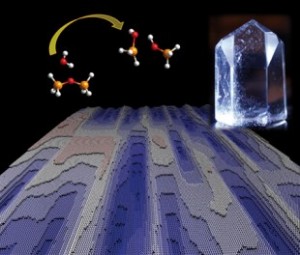Take a look,
While this December 20, 2023 news item on phys.org is oriented to Christmas, it applies to much more,
Throughout the festive season, countless individuals delight in the enchantment of ballet spectacles such as “The Nutcracker.” Though the stories of timeless performances are widely known, general audiences often miss the subtle narratives and emotions dancers seek to convey through body movements—and they miss even more when the narratives are not based on well-known stories.
This prompts the question: how can dance performances become more accessible for people who are not specialists? [emphasis mine]
Researchers think they have the answer, which involves putting dancers in sensor suits.
…
Putting dancers into sensor suits would not have been my first answer to that question.
A December 20, 2023 Loughborough University (UK) press release, which originated the news item, describes the international research project, the Kinesemiotic Body, and its sensor suits Note: A link has been removed,
Loughborough University academics are working with the English National Ballet and the University of Bremen [Germany] to develop software that will allow people to understand the deeper meanings of performances by watching annotated CGI [computer-generated imagery] videos of different dances.
Leading this endeavour is former professional ballerina Dr Arianna Maiorani, an expert in ‘Kinesemiotics – the study of meaning conveyed through movement – and the creator of the ‘Functional Grammar of Dance’ (FGD), a model that deciphers meaning from dance movements.
Dr Maiorani believes the FGD – which is informed by linguistics and semiotics (the study of sign-based communication) theories – can help create visualisations of ‘projections’ happening during dance performances to help people understand what the dance means.
“Projections are like speech bubbles made by movement”, explains Dr Maiorani, “They are used by dancers to convey messages and involve extending body parts towards significant areas within the performance space.
“For example, a dancer is moving towards a lake, painted on the backdrop of a stage. They extend an arm forward towards the lake and a leg backwards towards a stage prop representing a shed. The extended arm means they are going to lake, while the leg means they are coming from shed.
“Using the Functional Grammar of Dance, we can annotate dances –filling the projection speech bubbles with meaning that people can understand without having background knowledge of dance.”
Dr Maiorani and a team of computer science and technology experts – including Loughborough’s Professor Massimiliano Zecca, Dr Russell Lock, and Dr Chun Liu – have been creating CGI videos of English National Ballet dancers to use with the FGD.
This involved getting dancers – including First Soloist Junor Souza and First Artist Rebecca Blenkinsop – to perform individual movements and phrases while wearing sensors on their head, torso, and limbs.
Using the FGD, they decoded the conveyed meanings behind different movements and annotated the CGI videos accordingly.
The researchers are now investigating how these videos can facilitate engagement for audiences with varying levels of dance familiarity, aiming to eventually transform this research into software for the general public.
Of the ultimate goal for the research, Dr Maiorani said: “We hope that our work will improve our understanding of how we all communicate with our body movement, and that this will bring more people closer to the art of ballet.”
The Loughborough team worked with experts from the University of Bremen including Professor John Bateman and Ms Dayana Markhabayeva, and experts from English National Ballet. The research was funded by the AHRC-DFG and supported by the LU Institute of Advanced Studies.
They are also looking at how the FDG can be used in performance and circus studies, as well as analysing character movements within video games to determine any gender biases.
You can find the Kinesemiotic Body here, where you’ll find this academic project description, Note: Links have been removed,
The Kinesemiotic Body is a joint research project funded by Deutsche Forschungsgemeinschaft (DFG) and Arts & Humanities Research Council (AHRC) in cooperation with the English National Ballet (ENB). The project brings together an interdisciplinary group of researchers with the aim of evaluating whether a description of dance discourse informed by multimodal discourse analysis and visualised through enriched videos can capture the way dance communicates through a flow of choreographed sequences in space, and whether this description can support the interpretative process of nonexpert audiences. The theoretical framework of the research project is based on an extended dynamic theory called segmented discourse representation theory (SDRT) and on the Functional Grammar of Dance Movement created by Project Investigator Maiorani. Project’s long-term goal is to develop an interdisciplinary area of research focusing on movement-based communication that can extend beyond the study of dance to other movement-based forms of communication and performance and foster the creation of partnerships between the academia and the institutions that host and promote such disciplines.
It’s been a while since I’ve had a piece that touches on multimodal discourse.
*March 20, 2024 1630: Head changed from “How can ballet performances become more accessible? Put on a sensor suit on the dancers*” to “How can ballet performances become more accessible? Put a sensor suit on the dancers”
